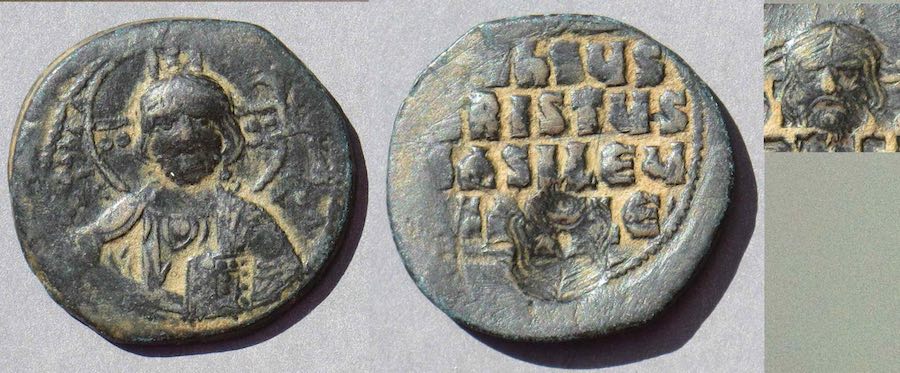
Head of Victory right, with part of her wing behind. The reverse is a mirror image of the obverse. In this photo the reverse almost seems to be in relief too, but it is not. The design is sunk into the coin. It should have been like this:
A Brockage Restrike
Brockages have one side an incuse version of the other. When coins were struck sometimes the coin stuck to the upper (pile) die and its obverse relief served as the pile die for the next coin, making an incuse obverse where there should have been a reverse in relief.
Enough brokages escaped the mint for it to be easy to find one, especially among Republican denarii. They tend to cost about the same amount as a regular original.

Head of Victory right, with part of her wing behind. The reverse is a mirror image of the obverse. In this photo the reverse almost seems to be in relief too, but it is not. The design is sunk into the coin. It should have been like this:

Roman Republican Moneyer L. Valerius Flaccus, 108 or 107 BC.
Mars walking left holding spear and trophy, apex before, grain ears behind. L VALERI FLACCI downwards on left
Crawford 306/1. Sear I 183.
The larger the coin type, the fewer the brockages. A heavier coin is less likely to stick to the upper die. If the coin falls off, as it should and almost always does, the next coin won't be a brockage.
Some brockages were restruck. When the minting error was noticed, mintworkers could have used the recently-struck coin as a flan to strike again and get it right.
High relief on the original obverse makes for a deep depression on the incuse side of a brockage. If that coin is restruck, in might be that the reverse die does not have enough relief to reach into that depression and obliterate that part of the brockage strike.
Here is a dramatic example of that. It is a large Byzantine anonymous bronze of Class A2, 28 mm and attributed to Basil II and Constantine VIII, 976-1025-1028.( Sear 1813)

Byzantine bronze was struck with die-axis 180 degrees. The top of the obverse is the bottom of the reverse. The high-relief head of Christ made a deep depression on the bottom of the reverse. Byzantine quality control is usually not high, but this time they caught the brockage error and restruck the coin. The obverse lined up nicely and looks like a single strike. The reverse is as well struck as most anonymous bronzes, but the depth of relief of the reverse die (which has only lettering) was not enough to reach down and delete the deeply incuse head of Christ. Turn the reverse upside down and Jesus Christ, King of Kings, stares out at you as shown in the upper right detail.
An amazing restruck brockage!
Go to the Table of Contents page.